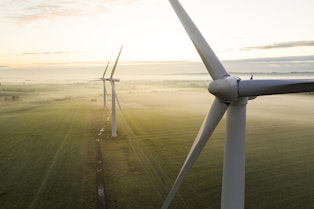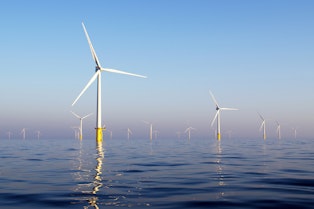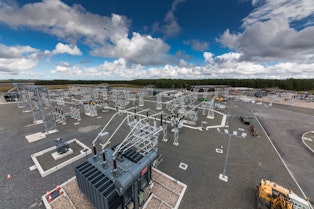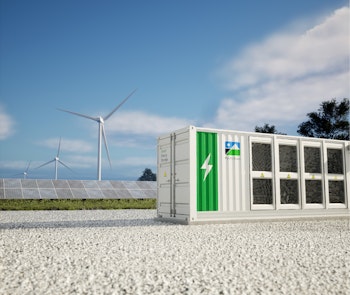
The UK has an enviable knack of jostling to the top of the queue when it comes to energy leadership. In the mid-1900s, the country’s dominance in the burgeoning oil and gas sector buoyed the forerunners of BP and Shell, two of the world’s 10 investor-owned Big Oil players today.
Britain was also able to develop a nuclear fleet that is still among the top 10 worldwide, in terms of installed capacity. Not bad for a country that is home to barely 3% of the world’s gross domestic product and less than 1% of global population.
And the UK is doing it again, this time with renewables and specifically offshore wind. It was until recently the world’s largest offshore wind market, before being overtaken by China, and remains a global leader in the technology by any standards.
According to the industry body RenewableUK, there are now more than 2,650 offshore wind turbines with a combined capacity of 28 GW spread across 43 projects in UK waters.
The 78 GWh or so of energy that they produce every year is enough to power more than 22 million homes and is helping to reduce UK carbon emissions by almost 34 million tonnes a year.

Offshore wind’s contribution to the UK grid leapt in August 2022 with the commissioning of Hornsea 2 off the Yorkshire coast. The 1.3 GW project is the world’s largest installed wind farm.
These figures already put the UK way ahead of any other western offshore wind market, yet the government is committed to going much further.
In its Ten Point Plan for a Green Industrial Revolution, published in 2020, the government said it would aim to have 40 GW of capacity installed by 2030, enough to power every home in the country. The target was later increased to 50 GW.
Rights to most of this capacity have already been leased by the Crown Estate, which issues licences for offshore wind around the country. In January 2023, the Crown Estate completed its fourth leasing round, for 8 GW, bringing the total capacity issued to developers to 41 GW.
The six winning projects in the latest leasing round could produce enough electricity to power 7 million homes. Separately in January, Crown Estate Scotland completed a leasing round called ScotWind that saw almost 25 GW of capacity being awarded.
The leasing round was notable for including the world’s largest auction of capacity for floating offshore wind, a nascent asset class that promises to let the industry extend into deep-water markets that are beyond the reach of bottom-fixed turbine technologies.
While all this is great news for the UK’s offshore wind energy leadership and the country’s progress towards decarbonisation, it poses a challenge for grid planners.
As in most countries, the UK grid was designed to take electricity from a few large generating stations to consumers around the nation. Some of these generating stations were nuclear plants near the coast, but most were coal plants inland.

Hence, the grid is simply not equipped to import large amounts of electricity from offshore. This is particularly the case in Scotland, where in addition grid capacity southwards is limited.
Hence, there is a danger of UK offshore wind farms producing large amounts of energy but having only limited capacity to get it to major demand centres in the southeast and Midlands. A further challenge arises from current legislation around onshore grid connections.
Under today’s rules, each offshore wind farm developer is responsible for getting its electricity to shore, which usually results in each project having its own export cable.
As the number of offshore wind farms grows, so does the need for export cable landing and connection points, adding to the challenges facing the grid on the coast.
Fortunately, however, there is a way to ease the problem using another energy infrastructure class that the UK excels at: battery storage.

Battery plants are perfect for places where there are grid constraints because they can capture the electricity that is not able to fit into the network at times of high supply and hold onto it until there is spare capacity. Let’s take a fictional example to show how this works.
Imagine you have an offshore wind farm that can produce up to 450 MW but a grid link that can only take 350 MW. Without storage, you would have to curtail any production beyond 350 MW or invest in costly and time-consuming grid upgrades.
But with batteries, you can store up to 100 MW of excess capacity and then export it to the grid when the wind drops. For developers, this has the added benefit of helping earn more money, since the price of electricity is likely to be higher when there is less wind energy in the system.
Battery parks can be developed in a matter of months, far more quickly than it is possible to carry out grid upgrades. And the compact nature of battery systems means they can be installed in relatively small areas, which is a plus given the built-up or protected nature of much of the UK coast.
Pacific Green’s Richborough Energy Park battery project, for example, occupies less than four acres yet has 100 MW of storage capacity. It is built on a brownfield site that used to belong to a coal-fired power station in Kent.
The site is now being redeveloped for clean energy and has a 100 MW connection to the National Grid transmission network, via a 400 kV substation. It also acts as a landing point for the 1 GW UK-to-Belgium Nemo Link interconnector, which entered service in 2019.
Richborough and a neighbouring Pacific Green battery project, Sheaf Energy Park, are also at the landing point for energy from the 300 MW Thanet offshore wind farm, which was the largest of its kind in the world when it began operation in 2010.
This kind of installation is easy to replicate around the UK—and will be critical in helping the grid to cope with the country’s offshore wind growth ambitions.
Publish date: 20 February, 2023